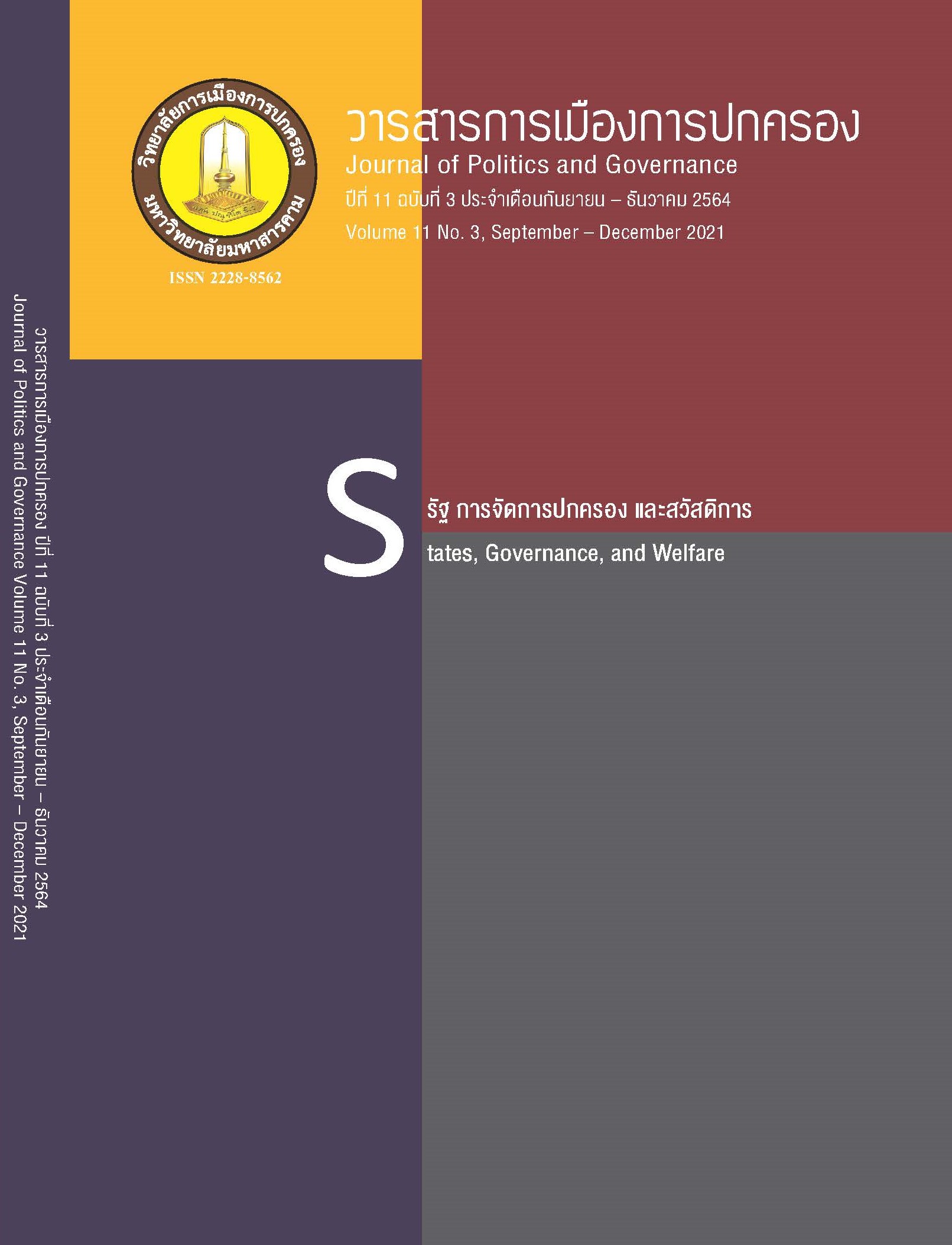Social movement of teachers in education: A case study of teachers in the northeastern region
Main Article Content
Abstract
The objectives of the qualitative research were (1) to carry out an analytical study of teachers, movement in the educational context for each period, (2) to conduct an analytical study of teachers, movement in terms of the operational structure and strategies of educational movement, and (3) to study the effects of social movement on teachers in education. The target group of the research comprised forty – five teachers in Northeastern Thailand. The instrument used for data collection was in – depth interviews. The findings of the research were as follows: 1) For the educational movement of teachers in each period, the teachers’ group comprised a gathering of teachers as an organization based on the country’s constitution. The movement was dynamic and continuous for several decades; 2) The model structure of the teachers’ group was operated as an organization, also called a teachers’ association, a teachers’ club, a teachers’ union, etc. It had an operational committee and members. The operational procedures and strategies of the movement were conducted as an organization at the district, educational area, provincial, regional, and national levels. The organization had procedures such as forming a conference to establish resolutions and conclusions, setting up an ad hoc committee to cooperate with influential individuals in the government, and campaigning among teachers as well as educational personnel to create symbolic expression and protest; 3) The effects from social movement of the teachers’ group in education included (1) the teachers’ group was able to bargain with the state power holders to change policies, laws, ministerial regulations, and rules, which were effective for the stability of the teaching profession as well as the evolution of education, and (2) the social movement of the teachers’ group as a result of the social capital of the teachers’ group, the social righteousness of the teachers’ group, and the patronage system in the bureaucracy.
Article Details
References
คำสั่งหัวหน้าคณะรักษาความสงบแห่งชาติ ที่ 19/2560 เรื่อง การปฏิรูปการศึกษาในภูมิภาคของกระทรวงศึกษาธิการ. (2560, 3 เมษายน). ราชกิจจานุเบกษา. เล่ม 134 ตอนพิเศษ 69 ง. 1-9.
เจมส์ ซี, สกอตต์. (2539). การเมืองในระบบผู้อุปถัมภ์กับผู้รับอุปถัมภ์ และการเปลี่ยนแปลงทางการเมืองในเอเชียตะวันออกเฉียงใต้. ระบบอุปถัมภ์. (ปรีชา คุวินทร์พันธุ์, ผู้แปล). กรุงเทพฯ: สำนักพิมพ์แห่งจุฬาลงกรณ์มหาวิทยาลัย.
ฉวีวรรณ สายบัว. (2546, 25 สิงหาคม). คอลัมน์ เศรษฐกิจระบบสารสนเทศ. ประชาชาติธุรกิจ, น. 6
ประภาส ปิ่นตบแต่ง. (2552). กรอบการวิเคราะห์การเมืองแบบทฤษฎีขบวนการทางสังคม. เชียงใหม่: มีดีไซน์เชียงใหม่.
ยอดพล เทพสิทธา. (2557, 15 สิงหาคม). ผลกระทบต่อระบบการเมือง การปกครองท้องถิ่น และมุมมองต่ออนาคตของการมีส่วนร่วมของประชาชน และประชาธิปไตยของส่วนท้องถิ่นหลังมีประกาศ คสช.ทั้งสองฉบับ. คณะนิติศาสตร์ มหาวิทยาลัยนเรศวร. [บทสัมภาษณ์พิเศษ]. สืบค้นจาก https://www.tcijthai.com/news/2014/08/channel/4748
สถาบันวิจัยเพื่อการพัฒนาประเทศไทย. (2562, 15 กุมภาพันธ์). การปฏิรูปการศึกษารอบใหม่: สู่การศึกษาที่มีคุณภาพอย่างทั่วถึง. สืบค้นจาก https://tdri.or.th/
สถาบันส่งเสริมการสอนวิทยาศาสตร์และเทคโนโลยี. (2562, 3 ธันวาคม). ผลการประเมิน PISA 2518. กระทรวงศึกษาธิการ. สืบค้นจาก http://www.ipst.ac.th/index.php
สรพล สุริยาสาคร.(2545). แนวความคิดเรื่องความชอบธรรมในรัฐธรรมนูญแห่งราชอาณาจักรไทยพุทธศักราช 2540. (วิทยานิพนธ์ศิลปศาสตรมหาบัณฑิต ไม่ได้ตีพิมพ์). บัณฑิตวิทยาลัย มหาวิทยาลัยเชียงใหม่, เชียงใหม่.
Kurian, George Thomas. (2011). The encyclopedia of political science. Washington: CQ Press.
Mckinsey & Company. (2010). How the World’s Most Improved Systems Keep Getting Better. Retrieved from http://mckinseyonsociety.com/how-the-worlds-most-improvedschool-systems-keep-getting-better/


